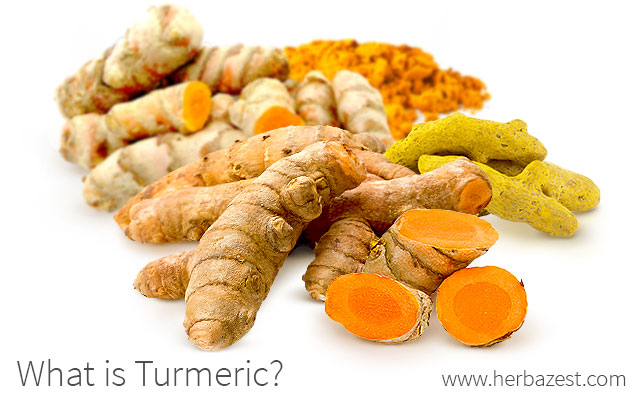India is the world's largest producer of turmeric, a herbaceous perennial grown extensively throughout Asia and, to a lesser extent, Africa and the Americas.
Turmeric yellow vibrant color and earthy flavor are present in Asian cuisine, particularly in curry dishes, and the spice has also been highly regarded for its medicinal properties, which have been used for millennia as an important part of Ayurvedic medicinal practices in India.
About Turmeric's Origins
To fully understand the importance of this beloved spice, it is necessary to know where does turmeric come from. Though it has not yet been identified in the wild, the turmeric plant is generally believed to have originated in East India, where the powder obtained from the dried turmeric root has been used for cooking, as a medicine, and for coloring fabrics for over 2,000 years.
The important plant was introduced to the Western world during the 14th century, as European explorers sought to develop trade routes in Asia.
About the Turmeric Plant
Turmeric, or Curcuma longa, is a stemless perennial herb belonging to the same family as the ginger root - the Zingiberaceae family. Curcumin,the active ingredient in the turmeric plant, is responsible for its antioxidant, anti-inflammatory, and antimicrobial properties.
With nearly 30 varieties in existence, turmeric plants can grow to approximately three feet (1 m) tall. Underground, they develop a hard, durable rootstock with a bright orange flesh. This is the most commercialized part of the plant, mainly used for culinary and medicinal purposes.
Above ground, the turmeric plant produces yellowish flowers and green, lanceolate leaves that are slightly oval-shaped and wider in the middle.
What is Turmeric Good for?
Turmeric is a spice of immense value to Hindu and Buddhist communities, who use it for spiritual purification, as well as in wedding rituals and other traditional religious ceremonies. Meanwhile, the potency of boiled turmeric juices has long proven an effective coloring agent for cotton and other fabrics.
The importance of turmeric has been pivotal in traditional Chinese and Ayurvedic medicine as a treatment for health issues related to digestion, arthritis, and liver function. It is also used to help regulate the menstrual cycle and provide relief from common skin ailments, such as eczema, scars, burns, and acne.
The medicinal properties of turmeric have been extensively researched by modern science, which have validated many of its traditional uses, attributing most of its therapeutic value to curcumin, a bioactive compound with strong antioxidant, anti-inflammatory actions.
Turmeric Names
Turmeric is derived from the Medieval Latin name terramerita, meaning deserved earth. Often referred to by its plant classification, Curcuma longa, turmeric is known by a wide range of other pseudonyms all over the world - in Sanskrit alone, it has nearly 60 synonyms related to its religious or medicinal use.
In English, Cucurma longa is also called turmeric root, Indian saffron, and yellow root. In Hindi and Bengali, it is known as haldi.
Turmeric Nowadays
What is truly amazing about turmeric seems to be the intense loyalty of those who swear by its use and effectiveness. Indeed, many folk uses of turmeric have withstood the test of time and continue on to this day.
For example, it is not uncommon for turmeric to be made into a rich paste and applied topically as a skin treatment. In fact, this forms the basis of the modern-day haldi rituals performed on engaged couples - whereby family and friends apply turmeric paste to their faces and lips to cleanse the body and protect the soul, preparing them for a new life together as husband and wife.
Though dying fabrics with turmeric remains a popular practice in India, its tendency to run and fade after washing has not allowed it to gain much traction commercially.
In the culinary world, fresh, raw turmeric, as well as ground turmeric and turmeric paste, are all used as a naturally-occurring food coloring and flavoring agent. It has become a staple ingredient in various mustards and curries. For this reason, it is now widely sought after all over the world.
While the yellow root of Curcuma longa can be ingested fresh or brewed as a turmeric tea for medicinal purposes, there are a variety of turmeric supplements on the market, such as turmeric capsules, and curcumin extract. All these herbal preparations are used to treat a variety of health conditions, from gas, indigestion, and respiratory illnesses, to inflammatory pain and arthritis.
Answering the question of what is turmeric will yield responses about as diverse as the turmeric plant itself. Though there remains a great deal to be learned about turmeric, one thing that remains certain is its undying popularity. One of the many great gifts of the ancient world, turmeric is a precious and highly-cherished herb with many unique characteristics and functions.
Sources
- Cellular and Molecular Life Sciences, Curcumin: From ancient medicine to current clinical trials, 2008
- Journal of Natural Science, Biology, and Medicine, Role of curcumin in systemic and oral health: An overview, 2013
- National Institutes of Health, National Center for Complementary and Integrative Health, Turmeric
- Natura Foundation, Curcuma longa, Phytotherapy
- Turmeric: The genus Curcuma




